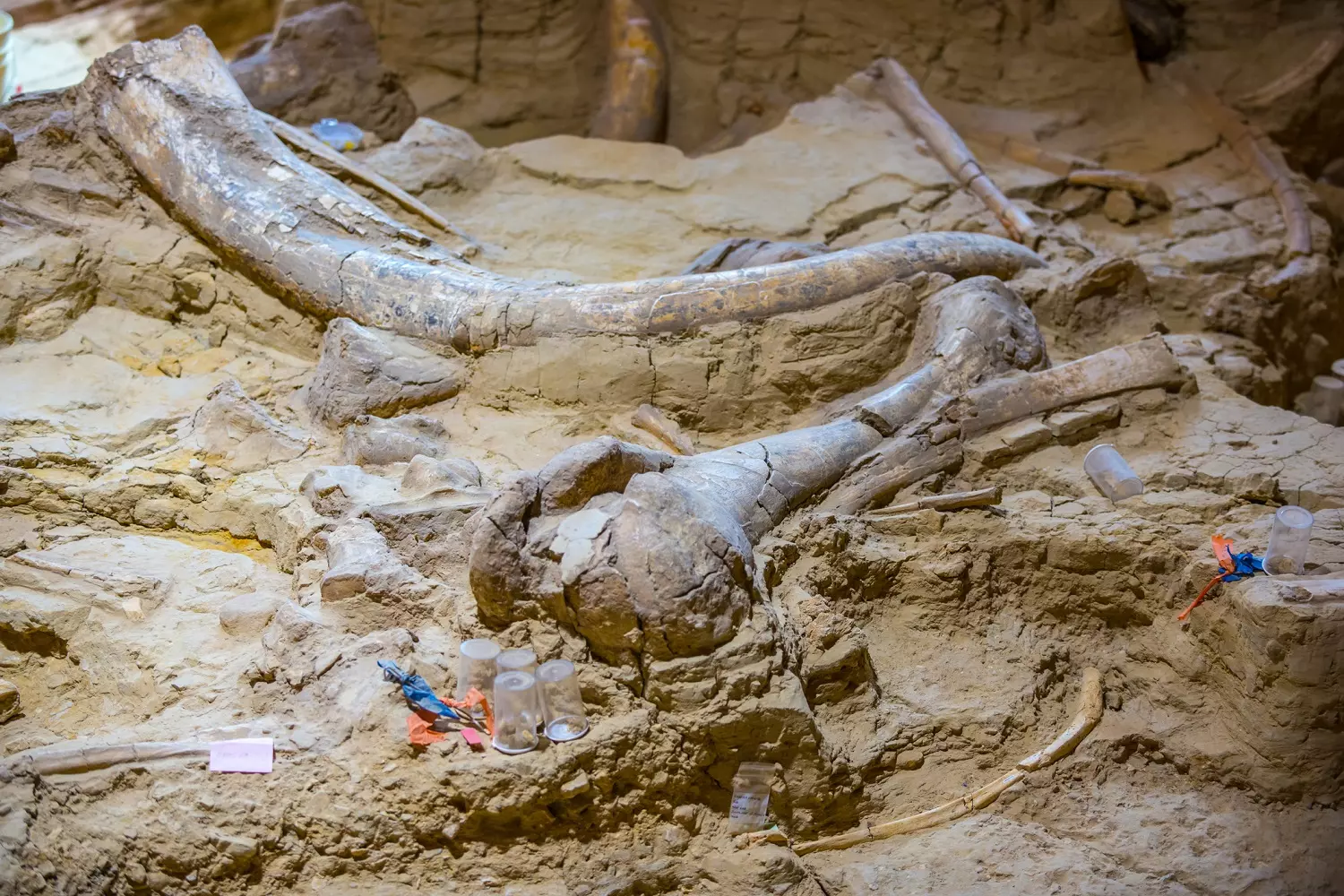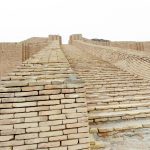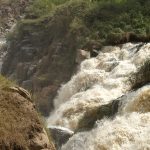[Originally published as A pre-Clovis butchered mammoth?]
In a new paper in the journal Frontiers in Ecology and Evolution, a team of researchers led by Tim Rowe of the University of Texas presents a detailed analysis of mammoth remains found on property owned by Rowe himself (see commentary here). Rowe is a vertebrate paleontologist, so this is a little out of his normal wheelhouse. The paper is open access, so you can read it all and check my claims yourself, which I encourage you to do.
The bones are the primary story here.
Rowe and colleagues describe in detail attributes of the bones that are consistent with other accepted mammoth butchery sites. The bones are smashed in patterns that are really only consistent with intentional smashing with pretty heavy implements (probably rocks). The bones are essentially pulverized, which is consistent with human activity intended to extract materials from the bones (e.g., grease, marrow, brains).
There are “butterfly fragments” present that occur when long bones are struck hard enough to knock pieces off of them. These are only found where people have been banging at bones. Other bone fragments present show the marks of being used as tools themselves, including “retouching.” One rib shows some jagged, parallel cut marks.
Microanalysis of the sediment in which the bones were buried reveals tiny bits of material formed by fire, as well as burned fish remains. The fish remains are really weird because the site is on a hillside, and fish are unlikely to be there naturally. They must have been brought to the site. The researchers also found a handful of small stone tool flakes that they believe are associated with the mammoth skeleton.
So all of that makes it seem pretty likely that the mammoth remains were butchered by people, and there was a fire there, possibly where they cooked some fish.
The real eye-opener was the carbon dating of about 37,000 years before present on one of the bone fragments.
That’s considerably earlier than the conventionally-accepted date of the settling of the Americas. The consensus view among anthropologists is that the Clovis culture, represented by a distinctive type of stone point found all over North America, are the first settlers of the Americas. That’s about 12,000 years ago on the conventional timescale.
A mammoth butchery site considerably earlier than that is surprising, although not unprecedented. On Human Genesis, I’ve noted a few of these, including a Mexican cave, thought to contain stone tools from before 26,000 years ago on the conventional timescale (see here).
What’s new about this paper is that Rowe and colleagues present an interesting hypothesis that tries to split the difference. They agree that the Clovis culture coincides with the genetic evidence indicating the ancestors of Native Americans came over at the same time. But they cite new genetic evidence indicating genetic ancestry that is today found only in southeast Asia and some South American tribes.
They argue that these genes represent an earlier population that started in east Asia and moved to the Americas. These earlier people are responsible for things like this mammoth butchery. Then later, the people who made Clovis tools moved in and essentially replaced the earlier population, leaving only small traces of them in the genes of some tribes. Thus, their model emphasizes two settlements of the Americas, with one considerably older than the lineages that gave rise to today’s native American tribes.
Now for my questions
I don’t think there are problems per se, but I feel like the paper is not complete. That incompleteness might account for the fact that this isn’t published in a more appropriate venue but is published in Frontiers as a “Hypothesis and Theory Article.” I don’t know, though. I’m just noticing this is a weird place to put an archaeology paper, but the technical chemistry and CT work might have made it a weird fit for a traditional anthro journal.
Question #1
They report the presence of sandstone cobbles and a large 50-lb boulder that they speculate would have been used as a hammerstone or anvil. Given the smashed bones, I would think that rocks used to smash the bones would leave some kind of marks on the stones. Maybe I’m wrong about that. It’s not my expertise, but with so many cobbles reported, I would have thought they would have examined them to discover if there were marks on the stones or other evidence that they were used as tools.
Question #2
They report the presence of burn remnants around the mammoth, but I think they could have made a better case for localized burning if they’d excavated material from outside the mammoth remains to show that burn remnants do not occur there. Otherwise, I’m not sure they can argue that this wasn’t a wildfire. Then again, the fish remains are pretty weird.
Question #3
Why date only one bone? Granted, it was one of those butterfly fragments that are very likely produced by human activity, but I’ve seen other archaeology and anthropology papers present dates on lots of specimens. I understand that these bones are really likely to be from the same animal, but still… dating a second bone would have really clinched it, I think.
Question #4
Where are the stone tools? If people did butcher this mammoth with stone tools, where did they go? Why are there only tiny remnants of stone tool flakes? In other butchery sites, we find stone tools littering the site, so why are they not here? Or are they (see Question #1)?
Question #5
Why aren’t there more cut marks on the bones? Dismembering an animal with stone tools leaves behind telltale fine cut marks, but here they report two highly-dismembered animals (a female mammoth and calf), yet they indicate only two very large and jagged cut marks on one rib.
Given all of this, the site is intriguing and is consistent with other sites of suspected pre-Clovis human activity, but these questions bug me. I’d like to think this was a pre-Clovis site, and the evidence they’ve described seems compelling. But I still have questions.







